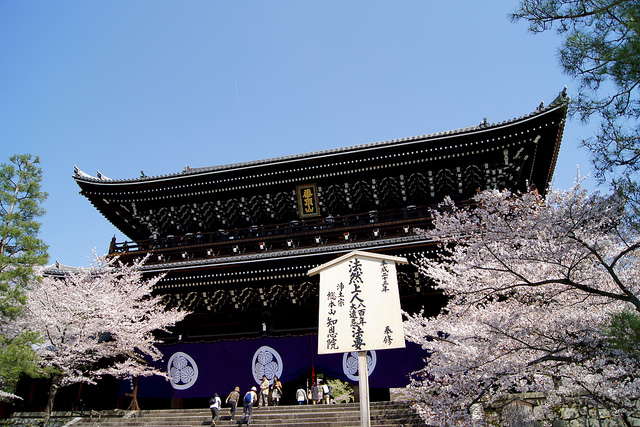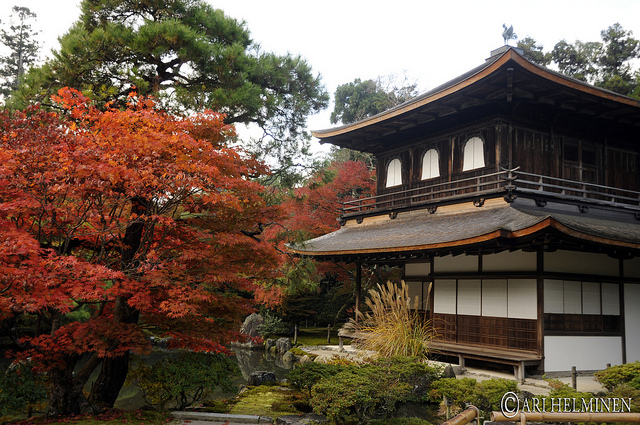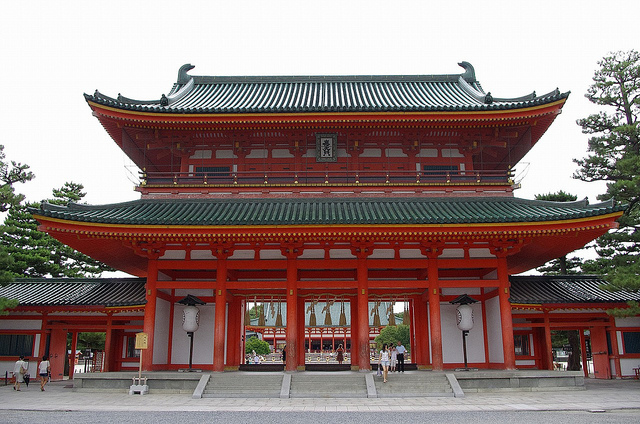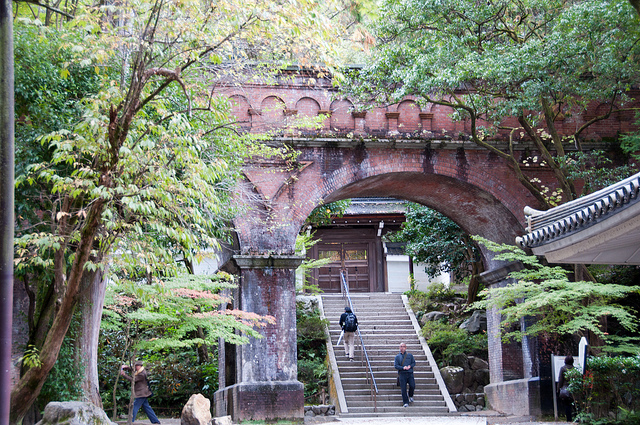In this article we would like to introduce Higashiyama・Gion Area.
Chion-in Temple 知恩院

Chion-in Temple is a Jodo sect temple built in memory of Honen Shonin. It has many structures which are registered as Important Cultural Properties including the San-mon Gate (a national treasure), the largest wooden gate in Japan, and the Miei-do Hall (a national treasure), which is seen near the top of the stone steps, at the left. The Seven Wonders of Chion-in include the Uguisubari-no-roka (Nightingale Hallway), which is 550 meters in length and was designed to make a noise when walked on, providing a warning of intruders, and the Wasure-gasa, a forgotten umbrella said to have belonged to a carpenter called Hidari Jingoro.
- Location 400, Hayashi-shimo-cho, Higashiyama-ku, Kyoto
- URL http://www.chion-in.or.jp/
Ginkaku-ji Temple 銀閣寺

Ginkaku-ji is one of the most famous structures of the Higashiyama Culture, which flourished during the reign of Ashikaga Yoshimasa, the eighth Shogun of the Muromachi Shogunate. It was built in 1482 by Yoshimasa as his mountain retreat, and was designated as a temple of the Rinzaishu Shokokuji sect of Buddhism after his death. Kannonden, the main structure popularly known as Ginkaku, or Silver Pavilion, because of the initial plans to cover its exterior in silver foil, and the structure (jibutsudo) enshrining Yoshimasa’s personal mortuary tablet, are National Treasures. The garden of rare, carefully chosen stones is considered the first example of the Chisen Kaiyu style garden designed around a pond and natural spring. Ginkaku-ji Temple is especially noted for these structures, garden, and their beautiful harmony with the surrounding natural environment.
- Location 2 Ginkakuji-cho, Sakyo-ku, Kyoto
- URL http://www.shokoku-ji.or.jp/ginkakuji/
Heian Shrine 平安神宮

The Heian-jingu Shrine was built in 1895 for the 1,100th anniversary of the founding of the Heian capital, Heiankyo, as a five-eighths scale copy of the original structure, the Chodo-in Hall in Heian, to enshrine the spirits of the first emperor, Kanmu, and the last emperor, Komei, to reside in Kyoto. The large Torii (shrine gate) at the Sando (path) is 24.4 meters in height. The Shin-en Garden has an area of 33,000㎡and is divided into east, west, center and south gardens that surround the Honden (main hall) and is designated as a place of scenic beauty.
- Location 97, Nishi-tenno-cho, Oakazaki, Sakyo-ku, Kyoto
- URL http://www.heianjingu.or.jp/
Kyoto Municipal Museum of Art 京都市美術館

The museum of brick tile made is located next to the giant orange torii gate of Heian Shrine. The museum has around 2300 works of Japanese art in its collection, including “Willow Trees in Grez-sur-Loing(Frence)”by Chu Asai and “Taigetsu(Waiting for the Moon)”by Shoen Uemura, the founders of modern Japanese art.
- Location Okazaki Park, Sakyo-ku, Kyoto
- URL http://www.city.kyoto.jp/bunshi/kmma/
Nanzen-ji Temple 南禅寺

Nanzen-ji Temple was built in 1291 by Museki Fumon (Daimin Kokushi) from the Imperial Villa of the retired Emperor Kameyama. The main sights of the temple are the Hatto Hall, a large and a small Hojo (residence), Nanzen-in Temple, and Konchi-in Temple, with Mt. Higashiyama forming a backdrop. The sparkling San-mon Gate at the front of the temple is famous for the stage where in the Kabuki play, “The Golden Gate and the Paulownia Crest,” Ishikawa Goemon, a Robin Hood figure, and says, “What a wonderful landscape!” In the Hojo, there are many paintings by the Kano school, and “Leaping Tiger Garden,” a rock garden. At the Suirokaku, aqueduct, you can watch the water flowing along.
- Location Sakyo-ku, Kyoto
- URL http://www.nanzen.com/
